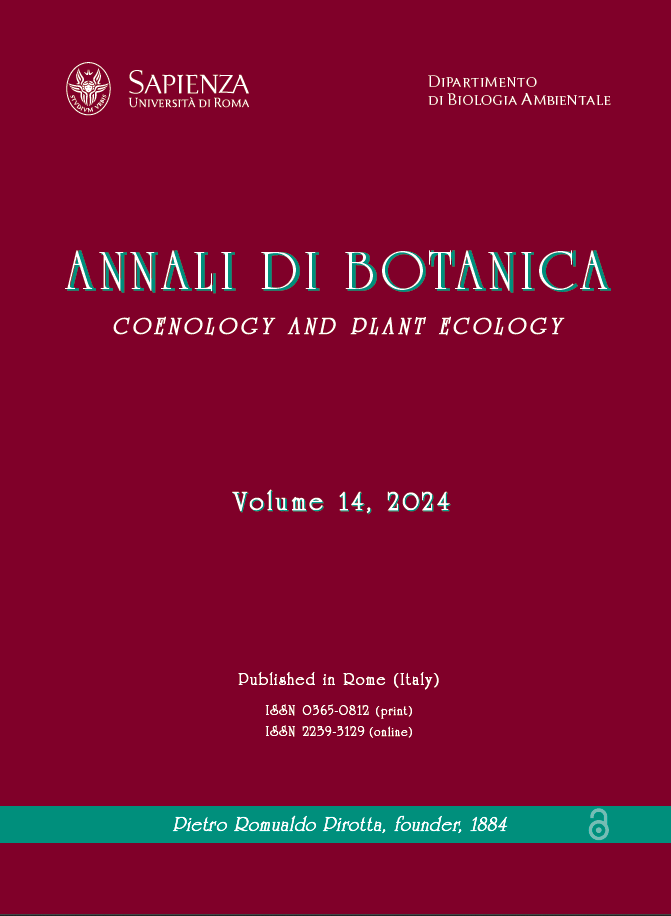Alien flora in freshwater ecosystems: basic knowledge for mitigating threats to native biodiversity in Lazio Region (central Italy)
DOI:
https://doi.org/10.13133/2239-3129/18512Keywords:
biodiversity, biological form, chorotype element, hydroecoregions, invasive species, status of naturalizationAbstract
Freshwater ecosystems are among the most biologically diverse on Earth providing essential ecosystem services for nature and society. Human impacts to lakes, rivers, streams, wetlands, and associated riparian habitats are dramatically reducing biodiversity and robbing critical natural resources and services. The degradation of freshwater ecosystems is more rapid than in terrestrial ones. Main anthropogenic threats include pollution, land-use change, and biological invasions. Regarding biological invasions, one of the main drivers of biodiversity loss at the global level, floristic lists represent fundamental step to help manage non native species.
Here we present the list of aliens occurring in freshwater ecosystems of Lazio region (central Italy) and their characterization.
The list includes 118 taxa (11.9% of the alien regional flora), belonging to 89 genera and 49 families). Richest families are Asteraceae (18 taxa; 15.2%) and Poaceae (10; 8.5%); richest genera are Amaranthus, Cyperus, Euphorbia, Oenothera, Symphyotrichum. Eleven taxa are listed among the worst European alien species. Therophytes, which usually suggest xeric conditions, are highly represented (30 taxa; 28.8%), highlighting their capability of adapting to diverse environmental conditions. The high proportion of taxa with a wide distribution (; 28, 23.7%) reveals the occurrence of r-selected species; 38 taxa (33.2%), native to the Americas, confirm the high migration and commercial flows between New and Old Worlds. In Several taxa occur in more than one habitat (acquatic, riparian, humid), with aquatic habitats including the highest percentage of invasive (27.3%). Most invasive species are: Alternanthera philoxeroides, Lemna minuta, Ludwigia peploides, Pontederia crassipes (free-floating macrophytes) and Arundo donax and Robinia pseudoacacia (terrestrial species). The number of invasive species decreases with inundation rates, whereas casual aliens increase. The analysis of Hydroecological regions shows a high percentage (33.3%) of invasive for HER13 (“Appennino Centrale”), probably due to the occurrence of industrial sites in the Sacco river valley (sounthern Lazio).
Downloads
Published
How to Cite
Issue
Section
License
Copyright (c) 2024 Duilio Iamonico, Mauro Iberite, Giulia Capotorti

This work is licensed under a Creative Commons Attribution-NonCommercial-ShareAlike 4.0 International License.
The copyright for articles in this journal are retained by the author(s), with first publication rights granted to the journal, articles are free to use with proper attribution in educational and other non-commercial setting.

